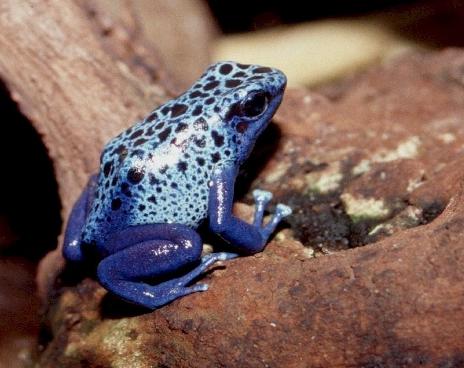


|
Dendrobatidae :
This family contains 9 genera and over 200 species. Members are small, brightly colored neotropical frogs. Relationships within this family are still undergoing study because many are confined to locations that are not easily accessed. Dendrobatids have short but strong hind limbs and are agile jumpers and climbers. They are characterized by the presence of divided scutes (thick pads of skin) on the dorsal surface of their digits. Poison frogs derive their name from the fact that the more derived genera in this group are brightly colored and produce toxic skin alkaloids, once only thought to be produced by plants, which are obtained through the insects they eat. These frogs are diurnal, except for Aromobates, and lay eggs on land (some species even deposit unfertilized eggs into the body of water containing the tadpole for nourishment). Males are highly territorial, partaking in vocalization and wrestling competitions and display cephalic amplexus (unique among anurans).
Genus :
Allobates (2 species)
Aromobates (1 species)
Colostethus (145 species)
Cryptophyllobates (2 species)
Dendrobates (47 species)
Epipedobates (31 species) |
